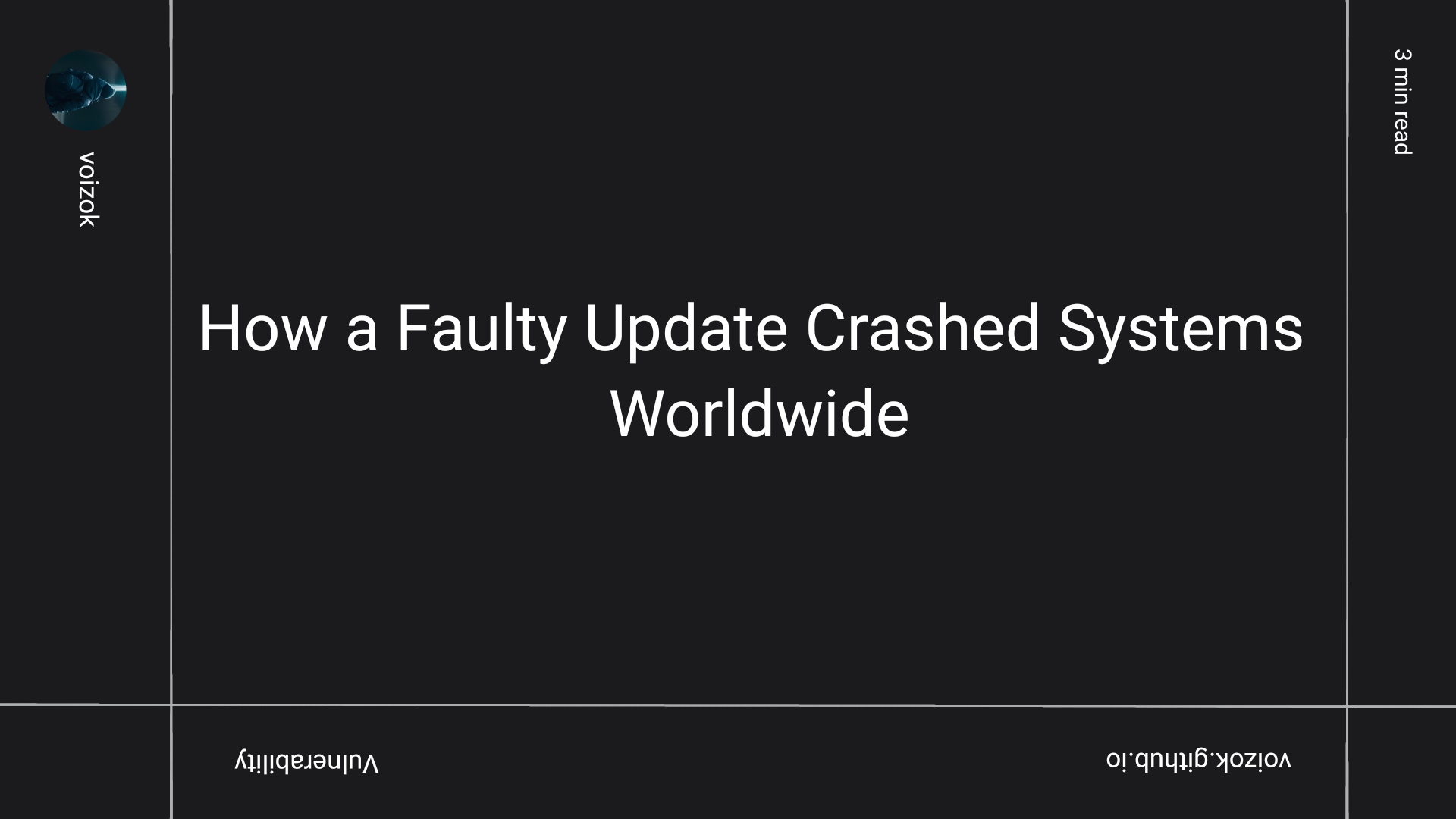Understanding the CrowdStrike Falcon Update Fail - A Deep Dive into the EDR Breakdown
The CrowdStrike Falcon Incident: Lessons Learned from a Major EDR Failure
In the fast-paced world of cybersecurity, even the most trusted tools can face critical issues. On July 19, 2024, CrowdStrike, a leading player in the cybersecurity arena, encountered a significant problem with its Falcon product. This issue led to widespread Windows system failures, leaving IT professionals scrambling to restore functionality. This blog delves into the details of the incident, its impact, and the lessons we can learn from it.
The Falcon Product and Its Role
CrowdStrike’s Falcon platform is renowned for its comprehensive Endpoint Detection and Response (EDR) capabilities. The Falcon Sensor provides advanced protection through several key functions:
- Data Collection: Captures data from endpoints to monitor activities and connections.
- Threat Detection: Employs machine learning and behavioral analysis to identify potential threats.
- Incident Response: Automates the isolation of affected systems and alerts security teams.
- Forensic Analysis: Aids in investigating and understanding cyber incidents.
- Threat Intelligence Integration: Uses threat intelligence feeds to provide context on detected threats.
The EDR Driver and the Update Issue
A crucial component of Falcon’s EDR is its kernel-level driver, which is loaded during the Early Launch Anti Malware (ELAM) phase of the Windows boot process. This driver plays a significant role in monitoring and protecting the system from the outset.
CrowdStrike’s update mechanism is designed for rapid deployment, with updates pushed from the cloud infrastructure multiple times a day. While this approach ensures timely protection against new threats, it also contributed to the rapid spread of the issue that unfolded.
The Problem Unfolds
The trouble began with a recent update that included changes to the sensor’s configuration files. This update aimed to address issues related to malicious named pipes used in cyberattacks. However, it contained a faulty channel file (C-00000291*.sys), which had a logic error causing severe system instability.
This error led to improper memory management and triggered a PAGE_FAULT_IN_NONPAGED_AREA stop code. Essentially, the OS tried to access a memory page not present in the non-paged area, reserved for critical system components. The result? A “Blue Screen of Death” (BSOD) and a boot loop that rendered many systems inoperable.
Why Did This Happen?
Kernel-level drivers operate with high privileges and direct access to system resources, which means that any errors can have severe consequences. In this case, the malfunctioning driver disrupted OS and hardware communication, leading to instability and frequent crashes.
Early speculation suggested that NULL bytes in the channel file were to blame, but CrowdStrike later clarified that this was not the case. Instead, the issue stemmed from a logic error in the update itself.
Impact and Response
The incident had a significant impact on businesses relying on Falcon for endpoint protection. IT teams faced the challenge of manually booting affected systems into safe mode and removing the problematic channel file to restore functionality. This process was particularly arduous for systems with BitLocker encryption, adding to the complexity and effort required for remediation.
Lessons Learned
Update Rollout Processes: The incident underscores the need for rigorous testing before deploying updates. Implementing A/B testing or staggered rollouts could mitigate the risk of widespread failures.
Quality Assurance: Continuous improvement of quality checks and validation processes is essential to prevent similar issues in the future.
Incident Response Planning: Organizations should have robust contingency plans for dealing with critical failures, including detailed procedures for handling problematic updates and system recovery.
Conclusion
The CrowdStrike Falcon issue serves as a stark reminder of the complexities involved in maintaining cybersecurity tools and the potential risks associated with rapid updates. While CrowdStrike remains a leading player in the industry, this incident highlights areas for improvement and the importance of proactive measures to safeguard against such disruptions. As we move forward, the lessons learned from this event will be crucial in shaping better practices and enhancing system reliability.
